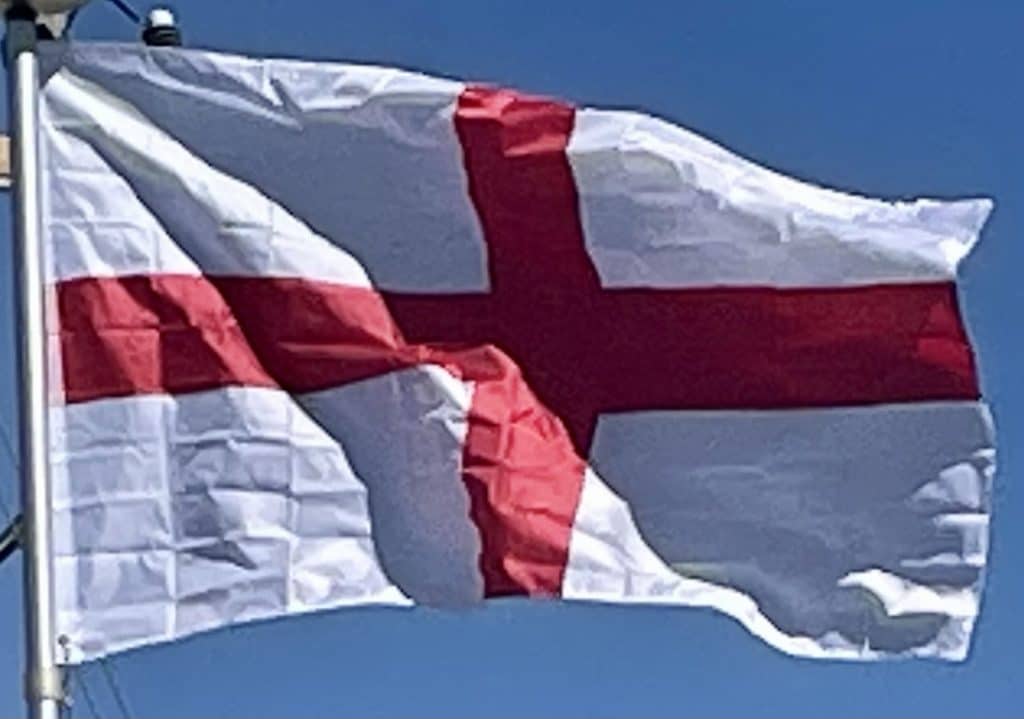St George’s Day was considered a “double major feast” from 1415, but George was still eclipsed by his “rivals” Saints Edward and Edmund. He finally rose to the position of the primary patron saint of England during the English Reformation, with the revised prayer book of 1552, when all religious flags, including all saints’ banners except for his were abolished.
John Cabot, commissioned by Henry VII to sail “under our banners, flags and ensigns”, reportedly took St George’s banner to Newfoundland in 1497. The first recorded use of St George’s Cross as a maritime flag, in conjunction with royal banners, dates to 1545.
In 1606, after the Union of the Crowns in 1603, it was combined with the Scottish St Andrew’s Cross to form the Union Jack, which James VI & I ordered be flown from the main tops of ships from both England and Scotland. The “Red Crosse” continued to be flown from the fore-top by James’ subjects in “South Britaine”—i.e., the St George cross was used together with the new union flag on English vessels.
In the 19th century, it became desirable for all nations of Europe (and later worldwide) to identify a national flag. During that time, the terms Britain and England were used largely interchangeably, the Union Flag was used as national flag de facto, even though never officially adopted.
